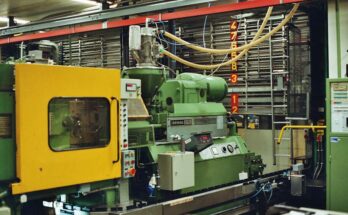Image Credit: pxhere.com
Document recognition technology has seen significant advancements in recent years, with the MRZ reader being a key component in the system’s functionality. MRZ readers, or Machine-Readable Zone readers, are primarily used to scan travel documents, such as passports and visas, to extract important information efficiently. This capability is fundamental in high-traffic environments such as airports, where rapid identity verification is crucial to maintain the flow of people and ensure safety. But document recognition goes beyond travel, extending into areas such as banking, healthcare, and law enforcement, where accurate and fast processing of documents is essential.
The core of document recognition lies in its ability to convert physical documents into digital formats using technologies like Optical Character Recognition (OCR). These systems can scan and interpret printed text, identifying key data points such as names, dates, and numbers. The introduction of the MRZ reader revolutionized the way documents are processed, particularly those with a machine-readable zone, which contains encoded information designed for quick extraction. This innovation is vital in environments where identity verification must be fast, accurate, and secure, such as border control, visa processing centers, and even online banking.
As technology has improved, so too have the capabilities of document recognition systems. Today’s systems can handle a wide range of documents beyond traditional passports and ID cards. Birth certificates, driver’s licenses, and even financial documents can be scanned, analyzed, and stored digitally. Advanced document recognition solutions now integrate MRZ readers with other sophisticated technologies such as biometric scanners, enabling multi-layered identity verification processes. For example, combining facial recognition software with document recognition helps to ensure that the person presenting the document is the rightful owner, further reducing fraud risks.
The role of document recognition in fraud prevention cannot be overstated. In industries like banking and insurance, accurate verification of documents is crucial in preventing identity theft and ensuring compliance with Know Your Customer (KYC) regulations. MRZ readers enhance the ability to detect tampered or forged documents by comparing the extracted data with existing records in real-time. This provides an additional layer of security, making it difficult for malicious actors to falsify identification information or gain unauthorized access to services.
One of the most exciting developments in the field of document recognition is the integration of artificial intelligence (AI) and machine learning. These technologies allow systems to learn from their interactions with documents, improving their accuracy and efficiency over time. For example, an MRZ reader may initially struggle with poorly printed documents or unusual fonts, but with AI, the system can adapt and improve its ability to recognize such challenges. Similarly, machine learning can help these systems detect anomalies in scanned documents, such as alterations or inconsistencies, which may indicate fraud.
Despite these advances, document recognition is not without its challenges. One significant concern is the protection of personal data. As more documents are scanned and stored digitally, there is an increased risk of data breaches or unauthorized access to sensitive information. Regulations such as GDPR have been introduced to protect individuals’ privacy and ensure that organizations handle data responsibly. These regulations require companies to implement robust security measures, such as encryption and anonymization, to protect scanned documents and prevent data misuse.
In addition to security concerns, document recognition systems must also deal with issues related to standardization. While MRZ readers work well with standardized documents such as passports, there is a vast range of non-standardized documents, particularly at a national or regional level. Driver’s licenses, for example, can vary significantly in format from one country or state to another. This variation makes it difficult for document recognition systems to accurately process all types of documents without additional customization Rubber Extrusions.
Looking to the future, we can expect to see further innovations in document recognition technology. Developments in AI and machine learning will likely lead to more sophisticated systems capable of handling increasingly complex documents. Additionally, the growing use of biometric data alongside traditional document recognition methods promises to create a more secure and streamlined identity verification process. MRZ readers will continue to play a vital role in this evolution, providing the foundation for rapid, reliable extraction of document information.
In conclusion, document recognition technology, with the help of MRZ readers, is transforming the way we verify identity and process documents. It has become a cornerstone of modern security systems, enabling fast, accurate, and secure identification across various industries. As the technology continues to evolve, integrating AI and biometric data, document recognition will become even more critical in safeguarding personal information and ensuring the smooth operation of security and verification processes worldwide.




